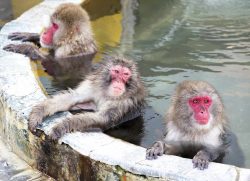Brewers Find Ways To Utilize Surplus Sake Kasu; Experience the Creative, Flavor, Nutritious Dishes Utilizing a Sake By-Product

Junmai Sakekasu Tamanohikari’s lunch plate features dishes made with sake lees.
14:00 JST, May 19, 2024
Sake kasu, or sake lees, may be a byproduct of sake production, but its pleasant flavor and high nutritional value has also made it a staple in many Japanese dishes, such as pickled vegetables. However, sake kasu is generated these days in larger volumes than ever before, meaning a lot of it ends up in the trash.
To reduce food waste, sake distillers try to come up with new products that contain sake kasu.
In February, Takeda Shuzo Co., a brewery in Joetsu, Niigata Prefecture, posted a picture of piles of sake kasu on X along with a message: “We don’t want to throw it out, so please come and get it!”

A post by the Takeda Shuzo Co. on social media urges people to come and get its surplus sake lees.
The brewery, which was founded in 1866, produces about 4 to 5 tons of sake kasu every year while brewing its signature Katafune brand among other sake products. This season, the amount of the byproduct increased by more than 20 tons.
“Due to the heatwave last summer, the sake rice was hard and didn’t dissolve well. That produced a tremendous amount of sake kasu,” Takeda’s 10th-generation brewer Haruki Takeda said.
The brewery could not get rid of its surplus sake kasu just by selling it, so it decided to give it away. The post went viral and by mid-March, all the kasu was gone, with people stopping by the brewery expressly to pick it up.
“I’m relieved it didn’t go to waste,” Takeda said. “I hope this’ll be a good opportunity for people to learn about sake kasu.”
According to an official at the Niigata Prefectural Sake Research Institute, sake kasu was in surplus at a lot of other breweries in the prefecture this season.
A person in charge at the Akita Research Institute of Food and Brewing said: “We’ve heard the sake rice didn’t dissolve well in Akita Prefecture either. It seems to be a nationwide trend.”
Sake kasu is a solid substance left over after sake is squeezed out. According to the National Tax Agency, 32,000 tons of sake kasu was generated in fiscal 2021. Sake kasu accounts for about 10% of the volume of every batch of sake. Although the cause is unclear, one thing is certain: This percentage has risen in recent years.
The byproduct contains a large amount of dietary fiber, B vitamins and other nutrients. Sake kasu is mainly used to make pickled vegetables but is also found in soups and amazake sweet sake. Changes in food culture have reduced demand for the byproduct. As a result, it’s often disposed of.
But there are brewers out there trying to stimulate new demand. In 2022, the long-established Kyoto brewery Tamanohikari Brewing Co. opened Junmai Sakekasu Tamanohikari, a Japanese cuisine restaurant that incorporates sake kasu into its menu. Some of the more popular dishes include oden made with a special broth whose ingredients include sake kasu, and miso-marinated cream cheese — also made from sake kasu. The brewery produces 100 tons of sake kasu per year.
“We’re proud not only of our sake but also of our sake kasu,” an official of the company, said. “We want our customers to enjoy everything on the menu to the fullest.”
FARM8 in Nagaoka, Niigata Prefecture, studies and develops fermented products and sells Jogurt — yogurt made from sake kasu fermented twice in lactic acid bacteria. A 350-gram bottle selling for ¥972 can be drunk as is or as a smoothie by mixing it with fruit.

Jogurt is an unsweetened “yogurt“ made from sake lees.
Sake kasu can be used in homemade recipes, too. Takeda recommends sake kasu paste, which is made by simmering a 1:1 ratio of sake kasu and water over low heat for about 5 minutes and letting it simmer for another minute with the lid on.
The paste can be dissolved in miso soup or ramen noodles, to make those more flavorful. “If the alcohol is properly boiled out, kids can have it too,” Takeda said.
"Features" POPULAR ARTICLE
-

Sanrio to Open Museum in Yamanashi Pref. Dedicated to Founder, Exhibits Include Hello Kitty, Other Characters
-

Autumn Foliage Surrounds Visitors to Tokyo’s Showa Kinen Park
-

My Daughter No Longer Speaks to Me, But I Want to See Her and My Grandchild
-

Kumamoto: Public Bath Refurbished as Library Where You Can Chat, Take Photos
-

Japanese Macaques Enjoy Bathing in Hot Spring in Hokkaido
JN ACCESS RANKING
-

Keidanren Chairman Yoshinobu Tsutsui Visits Kashiwazaki-Kariwa Nuclear Power Plant; Inspects New Emergency Safety System
-

Imports of Rare Earths from China Facing Delays, May Be Caused by Deterioration of Japan-China Relations
-

University of Tokyo Professor Discusses Japanese Economic Security in Interview Ahead of Forum
-

Japan Pulls out of Vietnam Nuclear Project, Complicating Hanoi’s Power Plans
-

Govt Aims to Expand NISA Program Lineup, Abolish Age Restriction

























